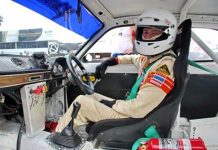There is a strong sentiment amongst the F1 spectators that, “It’s all artificial and nothing to do with driver skill.” That was in an email from a regular F1 viewer.
Unfortunately, for the past few years the F1 races have become processional. So processional that the FIA even commissioned an “Overtaking Working Group” to work out what could be done. For the first couple of years they did not do much. Grooved tyres were thrown out and slicks brought back – and that did nothing. Wings at the rear were made smaller, and that didn’t work. Wings at the front were made smaller and raised up from track level. That did nothing as far as overtaking was concerned, but it did bring a rash of muttering about wing flexibility at speed. This resulted in front wings that are so strong they could lift an elephant with one. But still there was no overtaking.
Three factors have been introduced – tyres, DRS (Drag Reduction System) and KERS (Kinetic Energy Recovery System).
One ex-F1 racer, Jean Alesi is in no doubt as to the relative importance of each one of these three factors. “As I see it, the biggest impact is clearly the tyres,” said Alesi. “Towards the end of the race things get really intense, creating some very exciting and unpredictable racing. I’m not the biggest fan of the way the DRS is working. In principle I think the idea is great, but I’m not convinced about the implementation. As for KERS (the power-boost system), it doesn’t really work for me, but let’s see what unfolds.”
So now look at the tyre situation. The Pirelli tyres are quite different in their wear characteristics, with rapid wear compounds, which also hang on well for around 10 laps and then deteriorate so rapidly some drivers described the feeling like “falling off a cliff”. What this has meant is that the driver has had to think more about keeping his tyres in good shape and the strategist in the pit lane has to juggle more variables. Get them right and you have an advantage. Get them wrong and you have a driver struggling on unsuitable tyres, but not enough time to pop into the pits for a change of rubber before the race ends.
Now, there are those who are criticizing the Drag Reduction System (DRS) which works by opening up the rear wing to decrease drag and downforce going down the straight. This allows a slipstreaming car a better chance of passing the lead car. This has resulted in more passing and repassing, but the critics say this is “artificial” too. The situation actually reminds me of Formula Ford tactics, where nobody wants to be the lead car entering the final lap as you will be slipstreamed and then beaten every time. However, I would like to see a broad yellow line on the track to show us viewers just where the DRS can be activated. It is a bit confusing at present.
The final item which is supposed to spice up the racing is the KERS button. The energy recovered during braking is stored for use to give a big boost when the driver pushes the button. At the start, it is sensational, launching the car past any other driver who does not have a fully charged KERS, or whose KERS is not working. So the three factors of tyres, DRS and KERS have made the race results more artificial. The more clever drivers and teams are working out just how to use those three factors to their advantage, just as previously drivers used to work out where and how to attack.




